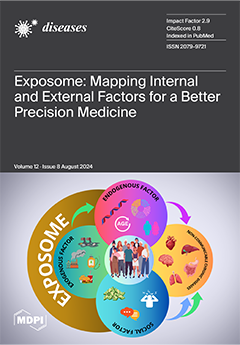We aim to evaluate the effectiveness of an acupuncture steam-warming eye mask (ASEM) on dry eye disease (DED) in visual display terminal (VDT) users. This prospective randomized clinical trial included VDT users with DED-related features who were randomly assigned to the ASEM group (ASEM for 2 weeks, 20 participants) or the steam-warming eye mask (SEM) group (SEM for 2 weeks, 20 participants). The tear film break-up time (TBUT), Schirmer test, tear meniscus height, ocular surface staining scores, eyelid and meibomian gland exam, subjective symptoms, and quality of life (QoL) scores before and after treatment were collected. A generalized linear mixed model was applied to compare the improvement of symptoms and signs between the two groups. After the 2-week treatment, all the subjective symptoms and questionnaire scores in the ASEM group improved significantly (all
p < 0.05), whereas the feelings of relaxation, comfortable, and refreshment did not change in the SEM group (both
p > 0.05). The TBUT, tear meniscus height, and meibum quality in the lower eyelid were significantly better in the ASEM group than the SEM group (all
p < 0.05), whereas no significant changes were observed in the Schirmer test and ocular surface staining scores. Compared with the SEM group, the ASEM group experienced a stronger feeling of refreshment (
p = 0.013), lower sensation of ocular discharge (
p = 0.031), higher TBUT (
p = 0.045), better meibomian gland expressibility of both eyelids (both
p < 0.05), and better meibum quality of both eyelids (both
p < 0.05), even after adjustments for age and sex. In conclusion, comparing with SEM, ASEM can improve some subjective DED symptoms, tear film stability, and meibum status in VDT users.
Full article






